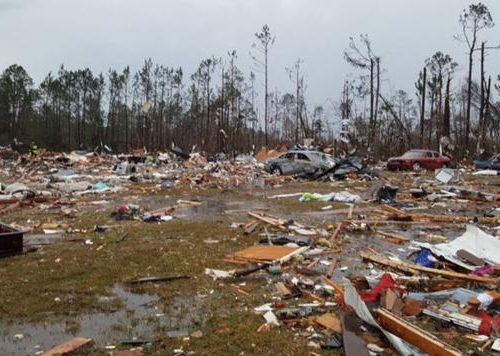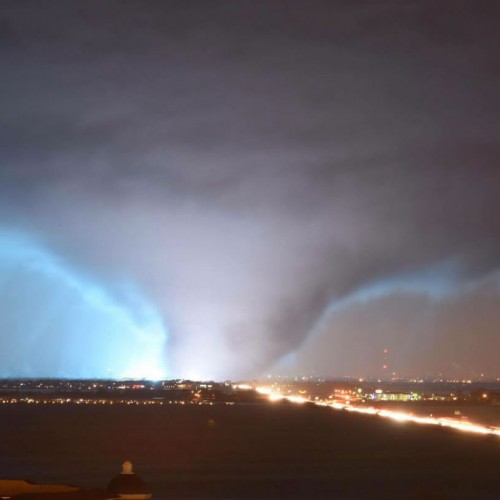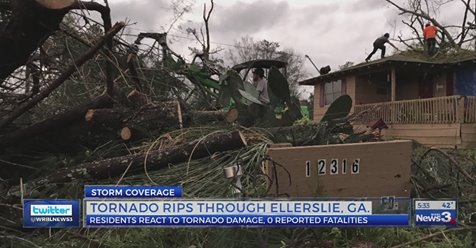HUDSONVILLE, Mich. (WOOD) — It was 60 years ago Sunday when the strongest tornado in West Michigan’s history ripped across Hudsonville and Standale, killing 17 and injuring 340.
The F-5 tornado is known as the Hudsonville/Standale tornado and was on the ground for more than 50 miles.
The tornado demolished mile after mile of houses. Of the 17 who were killed, 13 were in Hudsonville. Peak surface winds were recorded in Hudsonville on Van Buren Street.
Betty Overbeek is a survivor of that fateful day. Overbeek was 20 years old at the time, in the car with her parents and grandfather, trying to escape the twister.
“The tornado picked up our car and we were all thrown out of the car and my dad and my grandfather were killed,” Overbeek said.
It took a long time for her family to recover from the loss.
“After we were in the hospital for five weeks, went back home again. And I went to that spot on Port Sheldon where our car was thrown all by myself and looked around and then I thought — I felt badly, I know I did — and I thought, ‘Now, will the time ever come when I can tell my children and grandchildren this story?’ And it did. It did come. I could tell them about it and not start crying,” Overbeek said.
There were two other significant tornadoes that day. An F-4 touched down in Saugatuck, destroying the lighthouse before ripping a damage path to Holland that measured nine miles long.
It was originally thought the storm that produced that tornado was likely the one that produced the F-5 in Hudsonville just minutes later. However, recent evidence has suggested it was actually two different storm cells that produced the tornadoes.
Meteorologist Ernie Ostuno from the Grand Rapids National Weather Service has filed paperwork with the Storm Prediction Center in Norman, Oklahoma to change the way the tornadoes have been documented.
“The two of them (tornadoes) had been linked together as one tornado in the record books for 50 years,” Ostuno said.
An F-3 also dropped out of the sky in Bangor and twisted up damage to Alto. It produced a damage path of 55 miles, injuring 12.
Ostuno says most of the violent tornadoes that have touched down in our state have happened in the month of April. Some occur after cold snaps, ice storms or snow just a few days prior. The last “violent” tornado in West Michigan occurred in 1977. A violent tornado is considered an F-4 or an F-5.
“We’ve had zero since 1977, so we’ve had zero going on in 40 years,” Ostuno said.
Ostuno said it is only a matter of time before another occurs.
Now, decades later, our technology has greatly improved. Violent weather outbreaks are often foretasted several days out by the Storm Prediction Center. Tornado warning alert times have also greatly improved.
The improvement in technology is offset by the increase in population. Historical tornado tracks are now peppered with subdivisions, restaurants and residential areas — meaning it would be harder for a strong tornado to miss.
The key to safety, says Ostuno, is staying weather aware and knowing what to do if a tornado touches down.





